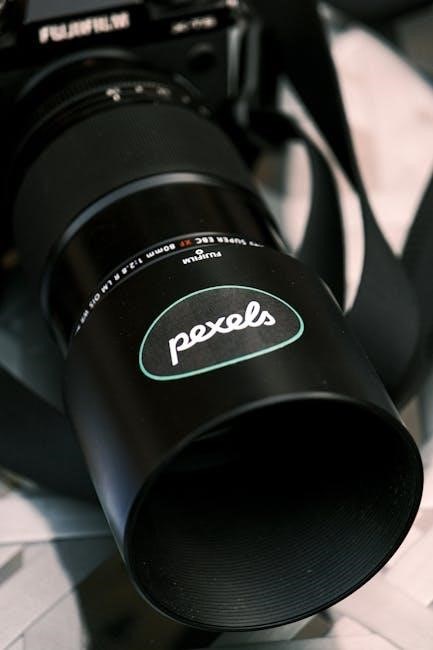Limited quantity labels are crucial for indicating hazardous materials in shipping, ensuring safety and regulatory compliance. They guide handlers on proper precautions and safe handling procedures.
Overview of Limited Quantity Labels
Limited quantity labels are essential for identifying packages containing hazardous materials in smaller, regulated amounts. These labels ensure safe handling, transportation, and storage by providing clear warnings and guidelines. They are designed to meet international and domestic shipping regulations, ensuring compliance and minimizing risks. The labels are highly visible, featuring distinct colors, symbols, and text to communicate potential dangers effectively. Their use is critical in various industries, including logistics, healthcare, and manufacturing, to maintain safety standards and prevent accidents. Proper labeling ensures handlers understand the risks and take appropriate precautions.
Importance of Limited Quantity Labels in Shipping and Handling
Limited quantity labels play a vital role in ensuring the safe transportation and handling of hazardous materials. They provide clear warnings and guidelines, enabling handlers to take necessary precautions and prevent accidents. Compliance with shipping regulations is maintained, reducing legal risks and ensuring smooth operations. These labels also facilitate effective communication about the contents of packages, helping to minimize risks during transit and storage. Their proper use is essential for safeguarding people, environments, and goods, making them indispensable in industries dealing with hazardous materials. Proper labeling enhances safety and operational efficiency significantly.

Definition and Purpose
A limited quantity label identifies packages containing hazardous materials in restricted amounts, providing critical handling instructions and compliance with safety regulations to ensure safe transportation and storage.
What is a Limited Quantity Label?
A limited quantity label is a marking applied to packages containing hazardous materials in restricted amounts. It indicates that while the contents pose risks, they are within acceptable thresholds for simplified handling and shipping. This label informs handlers of potential hazards and required precautions, ensuring compliance with safety regulations. It is designed to balance practicality for shippers while maintaining safety standards during transportation and storage. The label is essential for identifying risks and guiding proper handling procedures, making it a critical component of safe and compliant logistics operations.
Purpose of Limited Quantity Labels in Transportation and Storage
Limited quantity labels serve to communicate the presence of hazardous materials in packages, ensuring safe handling and compliance with regulations. Their primary purpose is to alert handlers to potential risks, enabling appropriate precautions during transportation and storage. These labels help prevent accidents by providing clear warnings and instructions, while also ensuring adherence to safety standards. By indicating that contents are within permissible limits, they facilitate efficient logistics while maintaining safety protocols, making them essential for secure and regulated movement of goods.

Design and Layout
The design of limited quantity labels includes specific symbols, color codes, and text to convey hazard information. The layout is standardized to ensure visibility and readability, making it easy to identify the contents quickly during transportation and storage.
Key Elements of a Limited Quantity Label
A limited quantity label must include a bold border, the limited quantity symbol, UN ID number, proper shipping name, and handling instructions. The text and symbols must be clear and standardized to ensure immediate recognition. The label should also include the shipper’s name and address, emergency contact details, and any relevant handling or orientation instructions. Proper color coding and layout are essential for compliance and visibility. All elements must align with international and domestic shipping regulations to ensure safety and proper handling.
Color, Graphics, and Text Requirements
Limited quantity labels must use a black border and text on a white background for maximum visibility. The limited quantity symbol, a square with a diagonal line, must be clearly displayed. Graphics should be simple and recognizable, avoiding clutter. Text must be bold, legible, and at least 6mm in height for UN numbers and proper shipping names. Colors and graphics must comply with international standards to ensure quick recognition by handlers. Proper spacing and alignment are critical to maintain readability and professional appearance.
Standard Fonts and Size Recommendations
For limited quantity labels, standard fonts like Arial, Helvetica, or Times New Roman are recommended for clarity. Text size must be a minimum of 6mm for UN numbers and proper shipping names to ensure readability. The limited quantity symbol should be at least 50mm on each side for visibility. Font styles should be consistent and bold to enhance legibility. Proper spacing between text and graphics is essential to avoid clutter. These specifications ensure compliance with international standards and facilitate quick recognition by handlers during transportation and storage.
Materials and Durability
Limited quantity labels require durable materials like vinyl or polyester for long-lasting use. Lamination enhances resistance to water, abrasion, and chemicals, ensuring labels remain legible during transit.
Recommended Materials for Printing Limited Quantity Labels
Recommended materials include durable vinyl or polyester films, offering resistance to water, abrasion, and chemicals. These materials ensure labels remain intact and legible during shipping and storage. Lamination is also suggested to protect against environmental factors, such as UV exposure or moisture, ensuring the label’s longevity. Additionally, using high-quality inks and coatings can enhance the label’s durability. It is essential to choose materials that comply with industry standards and regulations to ensure safety and reliability in handling hazardous goods.
Ensuring Durability for Long-Term Use
To ensure long-term durability, limited quantity labels should be printed on high-quality, weather-resistant materials such as vinyl or polyester. Lamination is recommended to protect against UV exposure, moisture, and abrasion. Additionally, labels should be printed with fade-resistant inks to maintain visibility over time. Proper adhesion is also crucial, with labels designed to stick securely to various surfaces without peeling. Testing labels under harsh conditions can help verify their suitability for extended use. Durable labels ensure compliance with safety standards and maintain clear communication of hazards during transportation and storage.

Printing and Application
Printing and application involve high-quality printers and compatible PDF templates. Ensure proper ink adhesion and surface preparation for longevity and readability.
Best Practices for Printing Limited Quantity Labels
For optimal results, use high-resolution printers and durable materials. Ensure labels are legible with clear fonts and vibrant colors. Print on matte or glossy finishes as needed. Always proofread text for accuracy. Test labels on various surfaces to confirm adhesion and visibility. Use software tools to design and preview labels before printing. Follow regulatory guidelines for color schemes and symbol placement. Store labels in a dry, cool environment to maintain quality. Regularly inspect printers for alignment and ink levels to avoid smudging. Ensure labels comply with international and domestic shipping standards for safety and consistency.
Tools and Software for Designing Printable PDF Labels
Popular tools for designing printable PDF labels include Adobe Illustrator, Canva, and Microsoft Word. Specialized software like Avery Design & Print and DYMO LabelWriter offer tailored templates. Online platforms such as PDFescape and Sejda allow direct editing. Use Adobe Acrobat for advanced PDF customization. Ensure designs are compatible with your printer. Utilize built-in templates for consistency and efficiency. These tools enable precise control over text, graphics, and layout, ensuring compliance with regulatory standards for limited quantity labels.
Application Techniques for Different Surfaces
Applying limited quantity labels requires techniques suited to the surface material. For smooth surfaces like plastic or metal, a wet application method ensures strong adhesion. Rough or textured surfaces may need a squeegee to press out air bubbles. Curved or uneven surfaces benefit from heat guns to mold the label. Use a laminate cover for outdoor or high-wear environments. Ensure the surface is clean and dry before application for optimal results. Different adhesives may be needed for specific materials, such as fabric or glass. Proper techniques ensure durability and readability, critical for safety and compliance.

Regulations and Compliance
Limited quantity labels must comply with international and domestic shipping regulations, ensuring adherence to safety standards and codes. They guide handlers on risks and proper precautions.
International and Domestic Shipping Regulations
International and domestic shipping regulations require limited quantity labels to meet specific design and content standards. These regulations ensure that handlers are aware of the risks associated with the contents. Compliance is crucial for safety and legal adherence. Regulatory bodies like the United Nations, ICAO, IATA, and the U;S. DOT enforce these standards. Proper labeling helps prevent accidents and ensures smooth transportation. Non-compliance can lead to legal penalties and delays. Adhering to these regulations is essential for safe and efficient shipping processes.
Compliance with Safety Standards and Codes
Compliance with safety standards and codes is essential for limited quantity labels to ensure safe handling and transportation. Regulatory bodies like the United Nations, ICAO, IATA, and the U.S. DOT dictate specific requirements for label design, content, and placement. These standards ensure consistency and clarity, reducing risks during transit. Proper compliance verifies that labels meet durability, visibility, and readability criteria. Failure to comply can result in legal penalties, delays, or accidents. Regular updates to these standards require ongoing awareness to maintain adherence. Compliance ensures operational safety and efficiency.

Templates and Customization
Templates for limited quantity labels provide a standardized framework for compliance and efficiency. Customization options allow users to tailor labels to specific shipping and regulatory requirements.
Free Printable Limited Quantity Label Templates
Free printable limited quantity label templates are widely available online, offering a cost-effective solution for businesses. These templates are designed to meet regulatory standards and can be downloaded in PDF format for easy printing. They often include customizable fields for specific details like material names, handling instructions, and hazard classifications. Many templates are sourced from official transportation websites or third-party platforms specializing in shipping materials. Users can print them using standard laser or inkjet printers on durable label stock. Ensure templates comply with international and domestic shipping regulations for safety and legal adherence; This resource is ideal for small businesses or occasional shippers needing professional labeling without additional costs.
How to Customize Labels for Specific Needs
Customizing limited quantity labels ensures compliance with specific shipping requirements and enhances clarity. Start by selecting a printable PDF template that matches your needs. Use design software to modify text, graphics, and layouts. Include essential details like hazard class, handling instructions, and emergency contact information. Add company logos or specific identifiers for brand consistency. For complex shipments, incorporate QR codes or barcodes for quick scanning. Ensure all changes comply with regulatory standards. Test the design on different surfaces to verify readability and durability. This tailored approach guarantees labels meet both legal and operational demands effectively.

Examples and Use Cases
Limited quantity labels are widely used in industries like pharmaceuticals, chemicals, and e-commerce to indicate low-risk items, ensuring safe handling and compliance with shipping regulations globally.
Common Industries Using Limited Quantity Labels
Industries like pharmaceuticals, chemical manufacturing, and e-commerce heavily rely on limited quantity labels to ensure compliance and safety in shipping hazardous materials. These labels are also widely used in the cosmetics and personal care sectors, as well as in aerospace and automotive industries, where controlled substances are commonly transported. Additionally, healthcare and medical supply companies utilize these labels to handle potentially hazardous materials safely. By clearly indicating limited quantities, these industries maintain safety standards and operational efficiency in their logistics and supply chains.
Real-World Examples of Effective Labeling
Limited quantity labels are effectively used in industries like pharmaceuticals to indicate safe handling of sensitive drugs. In chemical manufacturing, they ensure proper precautions for hazardous materials. E-commerce platforms apply these labels to comply with shipping regulations for items like batteries or cleaning agents. Similarly, medical supply companies use them to ensure safe delivery of equipment. These examples highlight how clear labeling enhances safety, meets regulatory requirements, and streamlines logistics, making them indispensable in modern supply chains.

Best Practices for Labeling
Ensure labels are clear, legible, and durable. Use bold fonts and contrasting colors for visibility. Regularly inspect labels for wear and tear, replacing as needed.
Ensuring Visibility and Readability
Visibility and readability are critical for limited quantity labels. Use high-contrast colors like black text on a white background to enhance clarity. Ensure text is bold and font size is adequate, typically between 10-12 points, to be easily readable from a distance. Avoid clutter by keeping the design simple and focused on essential information. Print labels on durable, glossy materials to prevent smudging or fading. Use standard fonts like Arial or Helvetica for universality. Regularly inspect labels for wear and tear, and replace them if they become illegible. Proper placement on clean, flat surfaces ensures visibility. Test labels under various lighting conditions to confirm readability.
Avoiding Common Mistakes in Label Design
Common mistakes in label design include overcrowding, poor color choices, and incorrect font sizes. Avoid using overly complex layouts or excessive text, which can confuse handlers. Ensure all elements like graphics, text, and symbols are balanced and proportional. Never use blurry or low-resolution graphics, as they can be hard to interpret. Verify compliance with regulations to avoid legal issues. Test labels under various conditions to ensure durability and readability. Proofread all text for errors before printing. Lastly, avoid using materials that may degrade quickly, ensuring labels remain legible over time.

Troubleshooting and FAQs
Common issues with printable PDF labels include misprints, alignment problems, and durability concerns. FAQs often address material defects, printing errors, and compliance queries, ensuring proper use and understanding.
Common Issues with Printable PDF Labels
When working with printable PDF labels, users often encounter issues like misalignment, blurry text, or incorrect sizes. These problems can arise from improper printer settings or outdated PDF versions. Additionally, compatibility issues between design software and printers may cause errors. Ensuring the correct DPI and using high-quality label stock can help mitigate these problems. Regularly updating printer drivers and software is also essential to prevent formatting discrepancies; Addressing these common issues ensures labels are clear, professional, and compliant with regulations.
Frequently Asked Questions About Limited Quantity Labels
Common questions include what materials are suitable for printing and how to ensure durability. Users also ask about design requirements and compliance standards. Many inquire about the best software for creating printable PDFs and troubleshooting alignment issues during printing. Additionally, there are questions regarding customization options and the proper surfaces for label application. Addressing these FAQs helps users create effective, compliant labels for safe and efficient shipping of limited quantity items.
Limited quantity labels are essential for safe and compliant shipping, ensuring handlers understand risks. Proper design and adherence to standards enhance safety and efficiency in transportation.
Limited quantity labels are designed to communicate handling requirements for hazardous materials. They ensure compliance with shipping regulations and enhance safety. Proper design includes clear graphics, text, and colors. Using durable materials ensures longevity. Printing and application must follow specific guidelines. Compliance with international and domestic standards is critical. Templates offer customization options for specific needs. Industries like logistics and chemicals widely use these labels. Real-world examples highlight their effectiveness in preventing accidents. Best practices include ensuring visibility and avoiding design mistakes. Troubleshooting common issues ensures proper labeling. FAQs address common concerns about usage and compliance.
Final Thoughts on the Importance of Proper Labeling
Proper labeling is essential for ensuring safety, compliance, and efficiency in shipping and handling. Limited quantity labels provide clear communication of hazards, reducing risks and legal liabilities. They guide handlers in taking necessary precautions, preventing accidents, and ensuring regulatory adherence. Clear and visible labels build trust with customers and partners. Investing in proper labeling practices enhances operational efficiency and consistency. By prioritizing accurate and durable labels, organizations can maintain safety standards and avoid costly errors. Proper labeling is a cornerstone of responsible and efficient transportation and storage of hazardous materials.

Additional Resources
Explore printable PDF templates, guides, and regulatory websites for limited quantity labels. These resources offer tools and information to ensure compliance and efficient labeling processes.
Recommended Websites for Printable Templates
For high-quality limited quantity label printable PDF templates, visit trusted websites like LabelValue, Avery, or MyLabelFactory. These platforms offer customizable designs, ensuring compliance with shipping regulations. They provide pre-designed layouts with placeholders for essential information, such as hazard symbols and handling instructions. Additionally, Zazzle and Etsy offer specialized templates for various industries. Always verify that the templates meet current safety standards and include required graphics and text. Using these resources ensures professional and compliant labeling for your shipments.
Further Reading on Shipping and Handling Regulations
For comprehensive insights into shipping and handling regulations, visit the International Air Transport Association (IATA) and U.S. Department of Transportation (DOT) websites. These resources provide detailed guidelines on hazardous material transportation, including proper labeling and packaging. Additionally, the Occupational Safety and Health Administration (OSHA) offers standards for workplace safety in handling hazardous goods. The United Nations Recommendations on the Transport of Dangerous Goods (UN Orange Book) is another authoritative source for global compliance. These resources ensure adherence to safety protocols and legal requirements for shipping hazardous materials.


